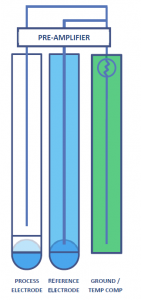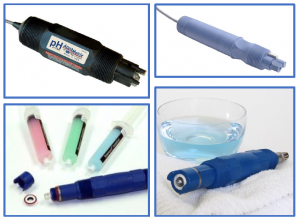We get to work with hundreds of professionals who design and build solutions to clean up and reduce process wastewater. They reconfigure existing systems to reuse water and use less clean water. They are passionate about creating better water, and better environments.
Better environments extend outside of water treatment areas. Today, many towns are reducing and eliminating single-use plastic drinking straws, bags and bottles. Water treaters are reminded that there are other consumables made of plastic. Many pH and ORP sensors have been considered consumable throwaways for a long time. It is possible to throw out fewer plastic pH and ORP sensors by simply extending the life of those already in service. While pH and ORP sensors need to be replaced from time to time, we estimate that they can actually be reused 30 to 50% of the time!
The service life of Differential pH and ORP sensors can be extended by simply changing salt-bridge junctions every 3 to 6 to 12 months, depending on application.

Differential pH or ORP sensors use three electrodes instead of two. While a combination-style electrode uses a reference wire in KCl solution, a differential pH sensor has a second measuring pH electrode in a known pH 7 buffered cell solution. Why is this important? Longer life and greater accuracy. The buffered solution resists pH change.
Over time, liquid from the process can dilute the reference. However, with a buffered electrolyte reference, an accurate reading can be maintained even with some contamination.
When the sensor reference solution in a differential sensor gets contaminated, it can be replaced, along with the double junction salt bridge. This will extend the sensor’s life.

If you have any specific questions on the application of differential pH and ORP sensors (pictured left), please contact us.
